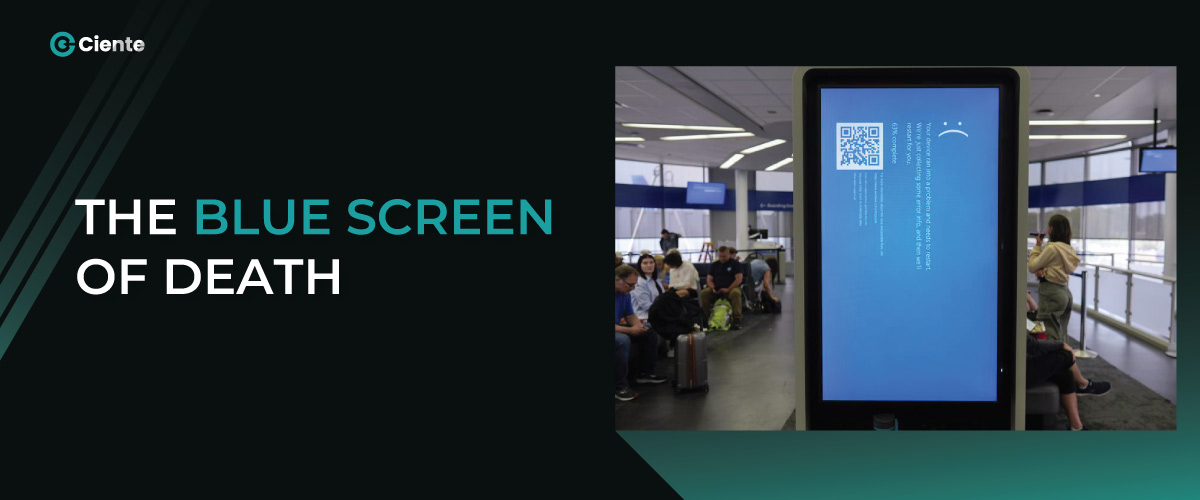Innovation thrives on openness and accessibility, and security requires caution and control. Learn to navigate these challenges for successful digital transformation.
A digital transformation strategy is what businesses need to survive and thrive in a future where technology is the primary economic driver.
The process of transformation requires more than just adopting a new technology. It requires cultural adjustments. Business leaders must create agile organizations that deal with change and uncertainty, which have become a permanent fixture of corporate life. By prioritizing adaptability and continuous learning, they will remain at the forefront of technological advancements.
The Innovation-Security Trade-Off in the Digital Age
Innovation is the need of the hour now, and openness to collaboration and new ideas is what businesses need, but it can also create vulnerabilities. Tech teams need to get past challenges like attack vectors, exploits due to untested systems, and any other potential damage. For better protection, you must have powerful encryption, strong firewalls, and accurate access protocols. However, these measures can also hinder innovation by creating friction and potentially limiting the reach and impact of new technologies.
This trade-off manifests in several common security challenges faced during digital transformation:
1. Wider Attack Surface
In the past, companies used to apply digital technologies only in specific areas of their operations. However, now they are seeking ways to digitize almost every aspect of their business. To achieve this, they are implementing a range of technologies such as artificial intelligence (AI), cloud services, big data analytics, and IoT devices. While these tools can enhance operations, they also create more opportunities for cybercriminals to exploit.
2. Increased Reliance on Third-Party Suppliers
As organizations adopt new tools and technologies, they start relying more on third-party suppliers. These suppliers can be cloud vendors or SaaS providers. However, if these third-party vendors already have any security threat, it can be passed on to the organization. The same is true if these vendors face any security breach. As a result, companies need to be more careful and vigilant while selecting third-party suppliers and allowing them to access their supply chains.
3. Pressure to Quickly Implement Collaboration Tools
Companies have access to new communication methods and data-sharing options through digital tools. While online collaboration tools are convenient, they may not always be secure. These tools are not only difficult to manage but also increase the risk of a data breach. Misuse of these platforms can lead to accidental exposure of sensitive or confidential information. Although cybersecurity programs are available to help protect data, they may not always be utilized due to rushed projects, insufficient security budgets, and other reasons.
4. Lack of Funds
As digital transformation becomes more common in companies, security budgets tend to be thin. Most of the funds are allocated towards implementing the new system, leaving little room for other expenses. However, to maintain data integrity in this high-tech world, companies need to shift their mindset. Executives and stakeholders should be aware of the risks involved in minimizing their security budget. It is essential to educate them about cybersecurity risks that may arise from the new systems and the necessary steps to mitigate them.
5. Employee Lack of Understanding
To ensure the effectiveness of data security programs, it is essential that every employee comprehends their significance and knows how to use them. It’s recommended to invest in early training to make your entire workforce understand the necessary steps to stay secure. Critical topics to cover in training include staying safe in the cloud, effectively using security controls, and identifying signs of a cyber attack. Once the security systems are in place, refresher training should be conducted to address any new concerns and to strengthen knowledge retention.
Building a Secure Foundation
A reactive approach to security can leave an open ground for security breaches. They might keep out minor nuisances, but against determined attackers, a reactive approach is of little use. To truly thrive, organizations need a proactive, built-in security approach backed by trust and resilience at the core:
- Proactive Vulnerability Management: Continuously assess your systems for weaknesses before attackers discover them. Patch those vulnerabilities promptly, ensuring your defenses are airtight.
- Zero-Trust Architecture: Implement robust access controls to verify every user and device, regardless of their origin. Adapting a “never trust, always verify” approach can be extremely helpful for overcoming security breaches.
- Data Encryption and Granular Access: Encrypt sensitive data at rest and in transit, rendering it useless to any unauthorized eyes. Implement granular access controls, granting access only to those with a legitimate need-to-know.
4. Secure Cloud Adoption: Choose cloud providers with proven security practices and integrate security into every stage of your cloud migration. Build cloud-native applications that leverage the cloud’s inherent security features.
5. Continuous Monitoring and Rapid Response: Continuously monitor your systems for suspicious activity and train your team to respond to incidents swiftly and effectively. Maintain constant vigilance to thwart potential threats.
Integrating Data Security with Solutions for Digital Transformation
Integrating data security with solutions is paramount for several reasons spanning across different areas like data protection, efficiency, and user trust.
Here’s a breakdown of its importance:
Data Protection: It minimizes vulnerabilities, protects sensitive information, and helps you comply with regulations.
Efficiency and Performance: When you integrate data security with solutions, you get streamlined operations, faster recovery from breaches, and enhanced decision-making
User Trust and Reputation: Integration of these two also helps you build trustworthiness, maintain reputation, and prevent any financial losses
Looking Into the Future of Security in Digital Transformation
Traditional cybersecurity is failing in the face of evolving threats. If your organization is not awake if you’ve yet not trained employees to spot breaches, and if regular vulnerability assessments and seamless collaboration between IT and business are still not on your agenda, you might be up for a big breach. Adaptable security measures and continuous improvement are imperative for gauging the ever-changing digital landscape and securing valuable assets.
In this relentless digital evolution, only the vigilant and adaptable can secure the future. The question is, how secure is your team for digital transformation?





